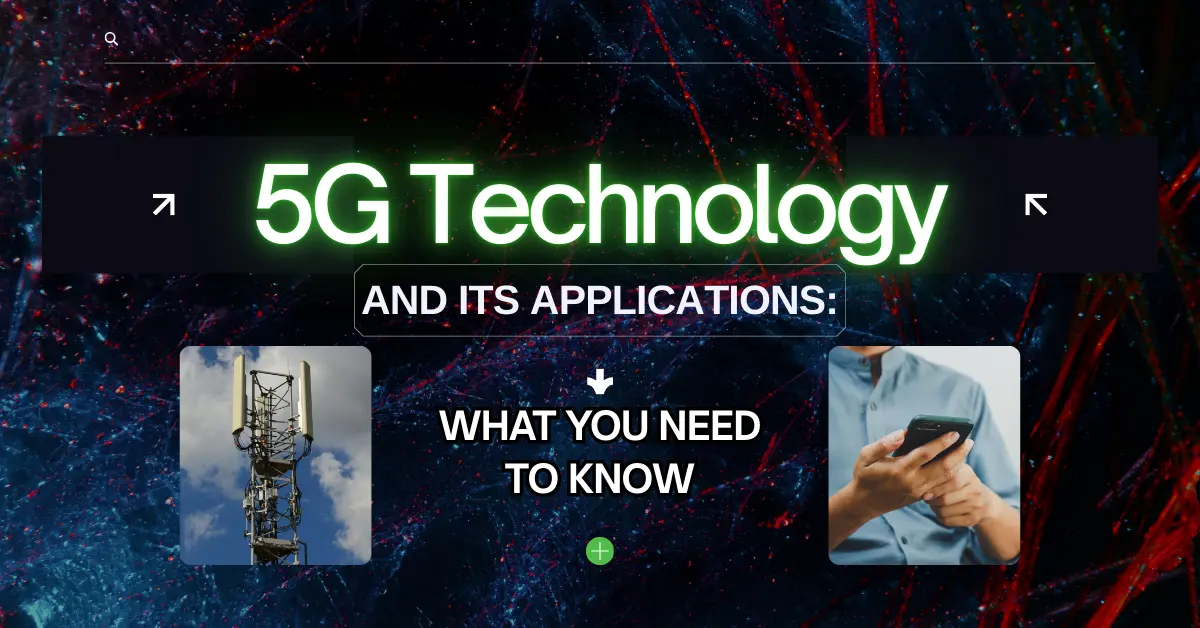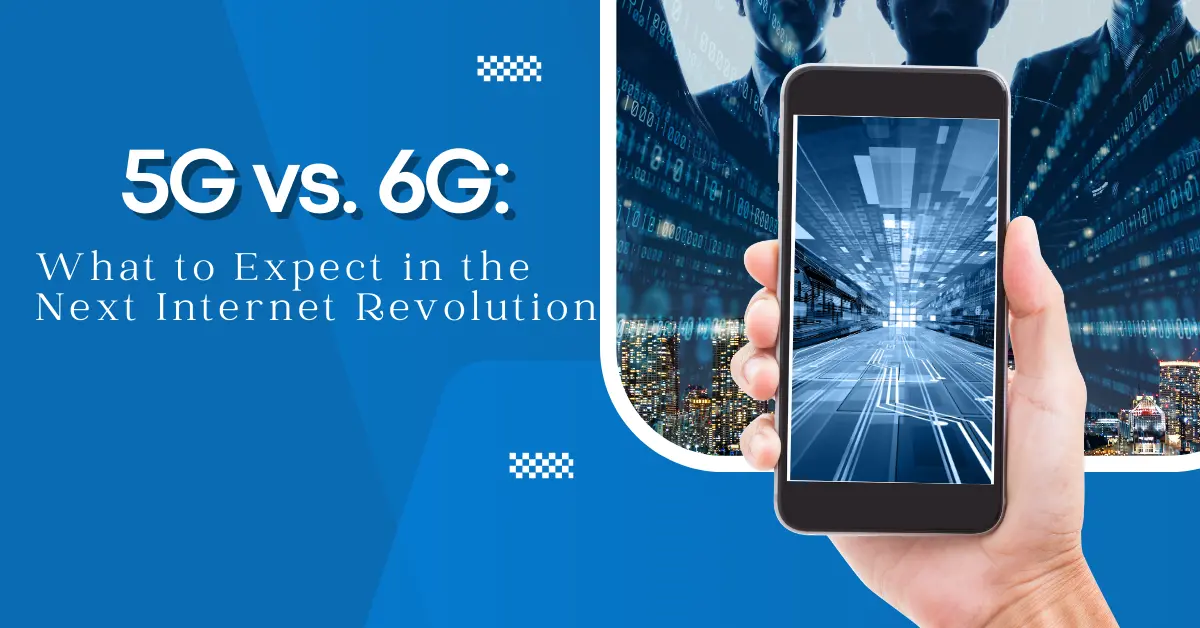
5G vs 6G: What to Expect in the Next Internet Revolution
- 83
- 0
- 0
5G and 6G are both advanced internet technologies, but 6G is the next step forward. While 5G offers faster speeds, lower delays, and supports more devices, 6G will take it even further with ultra-fast internet, reaching speeds up to 100 times faster than 5G. It will enable more advanced technologies like holographic communication, AI-powered systems, and smarter cities. 6G will provide nearly instant connections, making the internet more integrated into our daily lives. Although 6G is still in development, it promises to revolutionize how we connect and interact with technology in the future.
5G vs 6G: What to Expect in the Next Internet Revolution
Today, we’ll talk about something that will change how we connect to the internet – the jump from 5G to 6G networks. While 5G is still rolling out worldwide, researchers and tech companies are already working on 6G technology. Let’s look at what makes these technologies different and what changes they’ll bring to our daily lives.
Understanding 5G: Where We Are Now
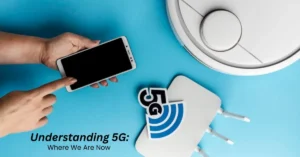
5G is the fifth generation of mobile networks, offering much faster internet speeds than 4G. With 5G, you can download a full HD movie in seconds rather than minutes. But speed isn’t the only improvement – 5G also handles more devices at once and responds much faster when you click links or play online games.
Key Features of 5G:
- Download speeds up to 20 gigabits per second
- Network response time (latency) of 1 millisecond
- Can link up to 1 million gadgets per square kilometer
- Better battery life for connected devices
- More reliable connections in crowded areas
Real-World Benefits of 5G:
- Better video calls without freezing or delays
- Smoother online gaming
- Quick downloads of large files
- Clear streaming of 4K and 8K videos
- Better connection in busy places like stadiums or concerts
Looking Ahead: What is 6G?
6G is the next step in wireless technology, planned for release around 2030. While 5G focuses on improving our current internet use, 6G aims to create completely new ways of using technology.
Expected Features of 6G:
- Download speeds up to 1 terabit per second (50 times faster than 5G)
- Network response time of 0.1 millisecond
- Coverage extending to space through satellite networks
- Built-in artificial intelligence
- Support for completely new technologies like holographic calls
How 6G Will Change Our Lives:
- Healthcare Revolution With 6G, doctors could perform surgery on patients from different cities using robots. The incredibly fast response time means the doctor’s movements would be copied exactly by the robot in real-time. Patients could also wear small sensors that continuously send health data to their doctors.
- Transportation Changes Self-driving cars will become more common with 6G. The quick network response time means vehicles can share information and react to road conditions instantly. This could make roads safer and reduce traffic jams.
- New Ways to Communicate Instead of video calls, 6G might let us use holograms to talk to people. Imagine seeing and talking to friends or family members as if they’re in the same room, even when they’re far away.
- Smart Cities 6G will help cities work better by connecting everything from traffic lights to power systems. This could help save energy, reduce pollution, and make city services work more efficiently.
- Extended Reality Virtual and augmented reality will become more realistic and useful. You might attend school or work meetings in virtual spaces that feel completely real, or see helpful information floating in the air as you walk around town.
Comparing 5G and 6G: The Main Differences
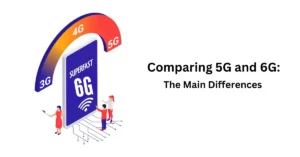
Speed
5G offers speeds up to 10 Gbps, while 6G promises speeds up to 100 times faster, reaching up to 1000 Gbps, enabling ultra-fast data transfer and more advanced technologies.
- 5G: Up to 20 gigabits per second
- 6G: Up to 1 terabit per second (50 times faster)
Response Time
5G has a response time (latency) of around 1 millisecond, while 6G is expected to reduce latency to near-instantaneous levels, potentially as low as 0.1 milliseconds, enabling real-time communication and ultra-responsive applications.
- 5G: 1 millisecond
- 6G: 0.1 millisecond
Coverage
5G provides wide coverage, but its signal strength can decrease in rural or remote areas. In contrast, 6G aims to offer even broader coverage, including better connectivity in rural, remote, and underserved regions, with enhanced reliability.
- 5G: Mainly ground-based
- 6G: Ground, air, and space coverage
Intelligence
5G supports basic AI-driven applications, enhancing efficiency and connectivity. 6G, however, will integrate advanced AI throughout the network, enabling smarter systems, real-time decision-making, autonomous devices, and more personalized, intuitive services for users.
- 5G: Basic network management
- 6G: Built-in artificial intelligence for network optimization
Energy Use
5G improves energy efficiency compared to previous networks by optimizing data transmission. However, 6G will take energy use even further by implementing advanced energy-saving technologies, such as intelligent energy management, to reduce consumption and enhance sustainability.
- 5G: More efficient than 4G
- 6G: Expected to use even less energy per bit of data
Challenges in Moving to 6G
Transitioning to 6G presents several challenges. Developing the necessary infrastructure and securing new frequency bands will be costly and time-consuming. Ensuring data security with faster networks, managing energy consumption, and integrating advanced technologies like AI and holography also pose significant hurdles. Additionally, the high costs of 6G may limit its accessibility, particularly in developing regions.
While 6G sounds amazing, there are several challenges to overcome:
Technical Challenges:
- Creating new types of antennas that can handle such high frequencies
- Building networks that can process huge amounts of data
- Making sure devices don’t use too much power
- Protecting against new security threats
Other Issues:
- High costs of building new networks
- Need for new rules and regulations
- Making sure everyone has access to the technology
- Training people to work with new systems
When Will We Get 6G?
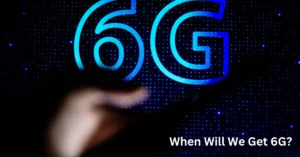
The timeline for 6G looks like this:
- 2024-2025: Early research and testing
- 2025-2028: Setting technical standards
- 2028-2029: First trial networks
- 2030: Expected first commercial networks
What This Means for You
Right now, focusing on getting good 5G service is most important. 5G will continue to improve over the next few years and will handle most people’s needs well. 6G is exciting but still far away, and 5G will be the main technology for at least the next 5-7 years.
If you’re buying new devices:
- Make sure they support 5G
- Don’t worry about 6G compatibility yet
- Focus on current features and needs
Looking to the Future
The jump from 5G to 6G will be bigger than any previous network upgrade. It won’t just make our current technology faster – it will create new ways to use technology that we can barely imagine now.
While we wait for 6G, 5G networks will keep getting better. Many of the improvements planned for 5G will help prepare for 6G. This means we’ll see steady improvements in our internet service over the next several years, even before 6G arrives.
Final Thoughts
Both 5G and 6G represent huge steps forward in how we connect to the internet and use technology. While 5G is here now and getting better, 6G is the technology that could completely change how we live and work. The best approach is to make the most of 5G today while keeping an eye on the exciting developments coming with 6G in the future.
Remember that every new technology takes time to develop and roll out properly. Just as 5G is still spreading worldwide, 6G will also take time to reach everyone. The important thing is that these technologies will keep making our connected world better, faster, and more useful for everyone.
FAQs
What’s the difference between 5G and 6G?
5G offers faster speeds and lower latency, while 6G promises speeds 100 times faster, with the ability to handle more devices and enable new technologies like holograms and AI integration.
When will 6G be available?
6G is still in development and is expected to roll out around 2030, though some preliminary research and testing are already underway.
Will 6G replace 5G?
No, 6G will complement 5G, providing even faster and more advanced internet services in the future.
How will 6G improve daily life?
6G will bring ultra-fast internet, enabling advancements like virtual and augmented reality, AI-driven smart cities, and faster, more reliable communication.
Is 5G enough for today’s needs?
Yes, 5G is already revolutionizing internet speeds, device connectivity, and network reliability, but 6G will take these benefits to a new level with even more speed and capabilities.
Also Read:
Best Smartphones Under 30000 in India [2025 Edition]
References:
https://en.wikipedia.org/wiki/6G
https://en.wikipedia.org/wiki/5G
Disclaimer: The information provided about 5G and 6G is based on current research and technological developments. 6G is still in the experimental and planning stages, and the actual features and rollout may vary. Please refer to official sources for the most accurate and up-to-date details.
Related post



